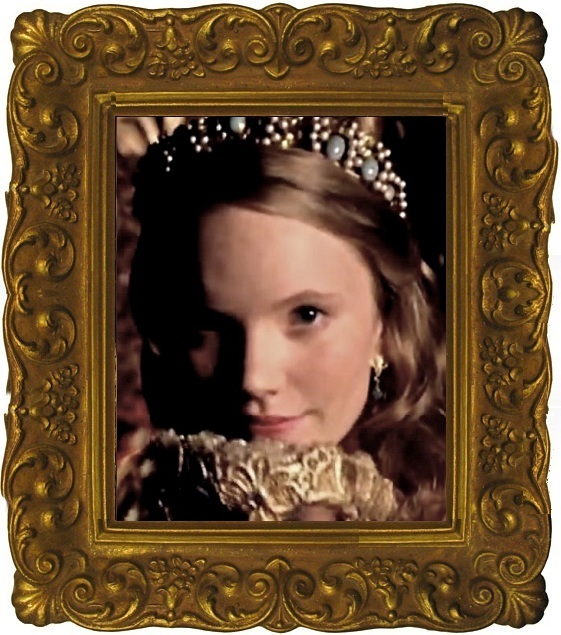 Catherine Howard (c. 1524 – 13 February 1542), also spelled Katherine or Katheryn, was the fifth wife of Henry VIII of England, and sometimes known by his reference to her as his "rose without a thorn".
Catherine Howard (c. 1524 – 13 February 1542), also spelled Katherine or Katheryn, was the fifth wife of Henry VIII of England, and sometimes known by his reference to her as his "rose without a thorn".
Catherine's birth date and place of birth are unknown (but occasionally cited as 1521 or 1525, possibly in Wingate, County Durham). She was the daughter of Lord Edmund Howard, a younger son of the 2nd Duke of Norfolk. This made her a first cousin of the King's second wife, Anne Boleyn. Catherine married Henry VIII on 28 July 1540, at Oatlands Palace in Surrey, almost immediately after the annulment of his marriage to Anne of Cleves was arranged. However she was beheaded after less than two years of marriage to Henry on the grounds of treason, meaning adultery committed while married to the King. Catherine's uncle found her a place at Henry's court. As a young and attractive lady-in-waiting to Henry's new German wife, Queen Anne of Cleves, Catherine quickly caught the eye of the King, who had displayed little interest in Anne from the start. Catherine's relatives privately doubted that the young woman was mature and intelligent enough to handle the responsibilities of being the King's mistress, as she had arrived at Court a few months earlier and was minimally educated and not particularly bright; but other factors were at play. The memory of Anne Boleyn's execution for supposed adultery had marred the standing of the Howards (a family proud of their grand lineage) in Henry VIII's court, and the mostly Catholic Howard family (Anne Boleyn was the only Protestant member of the Howard family) saw Catherine as a figurehead for their determination to restore the faith to England. As the King's interest in their relative grew, so did their influence. Within months of her arrival at Court, Henry bestowed gifts of land and expensive cloth upon Catherine.
When Henry had his marriage to Anne of Cleves annulled on 9 July 1540, rumours swirled that Catherine was pregnant with his child. Their quick marriage just a few weeks after the annulment from Anne, in July 1540, reflected Henry's lifelong urgency to secure the Tudor succession by fathering healthy, legitimate sons, since he had only one, Edward (later Edward VI). Henry, nearing 50 and expanding in girth, showered his young bride with wealth, jewels, and fantastically expensive gifts. War with France and the English Reformation had cost Henry the goodwill of his people, and he was suffering from a number of ailments. The presence of a young and seemingly virtuous wife in his life brought him great happiness. Her motto, "Non autre volonté que la sienne" or "No other wish but his", supposedly reflected her desire to keep Henry, an ailing man 30 years her senior, content.
Despite her newly acquired wealth and power, however, Catherine found her marital relations unappealing. She was not pregnant upon marriage and was repulsed by her husband's obesity. He weighed around 21 stone (about 140 kilograms or 300 pounds) at the time, and had a foul-smelling, festering ulcer on his thigh that had to be drained daily. Early in 1541, she embarked upon a light-hearted romance with Henry's favourite male courtier, Thomas Culpeper, whom she had initially desired on her arrival at court two years earlier. The couple's meetings were arranged by one of Catherine's older ladies-in-waiting, Lady Rochford, the widow of Catherine's cousin George Boleyn (brother of Anne Boleyn and Mary Boleyn).
Henry and Catherine toured England together in the summer of 1541, and preparations for any signs of pregnancy (which would have led to a coronation) were in place, indicating that the married couple were sexually active with each other. However, as Catherine's extramarital liaison progressed, people who had witnessed her indiscretions at Lambeth began to contact her for favours. In order to buy their silence, she appointed many of them to her household. Most disastrously, she appointed Henry Manox as one of her musicians and Francis Dereham as her personal secretary. This miscalculation led to the charges of treason and adultery against her two years after her marriage to the King.